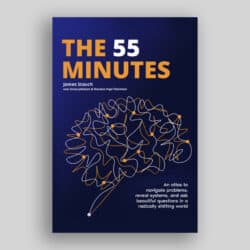By Frank Minton and Lorna Somers
Published by Somersmith, Waterdown, Ontario LOR 2HO
REVIEWED BY GEOFFREY J.R. DYER
Tory Tory DesLauriers & Binnington, Barristers and Solicitors, Toronto
This work is a valuable addition to philanthropic literature in Canada. The co-authors are Frank Minton, a renowned planned giving consultant and former director of planned giving for two major universities and Lorna Somers, the highly successful Director of Development at McMaster University in Hamilton, Ontario. Arthur B.C. Drache, a leading Ottawa tax lawyer and author, vetted the income tax analysis in the book for technical accuracy. As the title suggests, the work sets forth in considerable detail the fundamental principles and methodologies for establishing and managing an effective planned giving program.
The book is divided into 12 chapters. The first three chapters describe the historical and current climate for planned giving in Canada, the criteria and steps for establishing a planned giving program, and where planned giving should be integrated within a charity’s overall fund-raising activities. The appendices to Chapter 2 include useful suggestions for the terms of reference of a planned giving committee, policies and guidelines for the program, a job description for a director of planned giving, a sample endowed-fund agreement and a statement of endowment policies.
Chapters 4-6 describe in detail various methods which may be used to effect planned gifts, including technical and creative ideas and techniques. Chapter 4 is the most technical and attempts to illustrate all of the types of planned gifts, how they are structured, what tax consequences are relevant and the benefits to both the donor and the charity. The level of detail extends to an analysis of such things as gifts of residual interest in property, the use of self-insured and re-insured charitable gift annuities and gifts of life insurance proceeds. Precedents are provided for charitable remainder trust agreements, residual interest gift agreements and gift annuity agreements. A separate chapter, Chapter 6, is dedicated to the bequest in recognition of the fact that bequests are the largest source of charitable planned giving. Again, the appendices contain precedents.
Chapters 7-9 focus on marketing, the identification of prospective planned givers, the cultivation of those prospects and ideas for “closing the gift”. Chapter 10 describes the importance and basic elements of the recognition and stewardship aspects of a planned giving program, containing many useful ideas for “following through” once gifts have been secured and promises made.
Chapter 11 identifies ethical and legal liability issues which can arise in the management of a planned giving program. Chapter 12 is a useful compendium of planning giving resources-publications, professional organizations and the like-and actual quotations collectively entitled “wisdom from the field”.
The book is replete with creative and practical ideas and is extremely well thought out, organized and thorough. Although many of the creative gift planning ideas are good, they should be studied with a critical eye, recognizing that any two sets of complex circumstances are rarely the same. The actual precedents which are provided, although very useful, should not be followed slavishly but should be considered in the context of each charity’s own program and in independent consultation with the charity’s own professional advisors. A few examples pertaining to the use of life insurance products would, in a real case, require further analysis and more detailed examination.
In the end, any charity that is a candidate for a planned giving program should add this book to the development office library. (Institutions with existing planned giving programs may have already acquired it.) For any charity unsure of whether it is a candidate for a planned giving program, the guide contains a list of criteria for those considering establishing such a program which will make the decision considerably easier.


